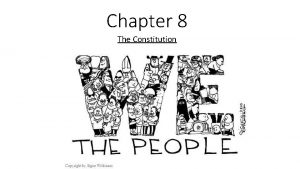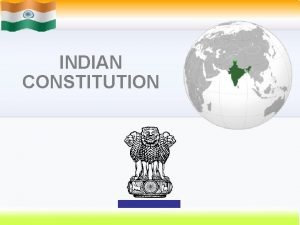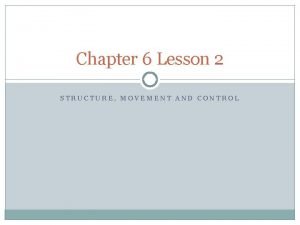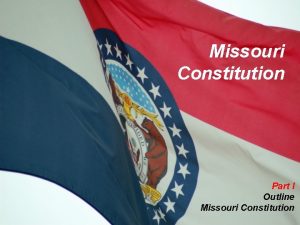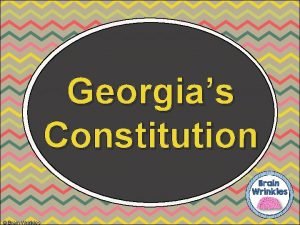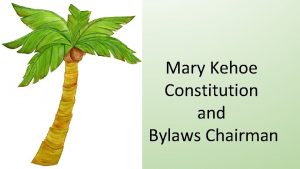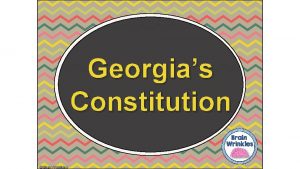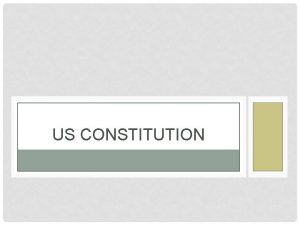Structure of the Constitution Outline of the Constitution







- Slides: 7

Structure of the Constitution

Outline of the Constitution • Preamble – Statement of Purpose • Articles – I: Legislative Branch – II: Executive Branch – III: Judicial Branch – IV: Relations among the states – V: Amendment Process – VI: Federal Power – VII: Ratification • Amendments – 27 total – First 10 are the Bill of Rights

Preamble We the People of the United States, in Order to form a more perfect Union , establish Justice, insure domestic Tranquility, provide for the common defence, promote the general Welfare, and secure the Blessings of Liberty to ourselves and our Posterity , do ordain and establish this Constitution for the United States of America.

Article I: Legislative Branch Bicameral Congress: • Senate – 2 Senators / state • House of Representatives – Based on population • Reps serve for 2 year terms • Senators serve for 6 year terms • Important Powers: – Make laws – Set taxes – Declare war – Override Vetoes – Borrow money – Regulate national and international trade – Print money

Article II: Executive Branch • President and Vice • Important Powers: President are elected to 4 – Commander-in-Chief year terms – Grant pardons • Qualifications: – Make treaties – At least 35 years old – 14 year resident of the – US Natural born citizen • Elected by the Electoral College – Appoint federal officers – Ensure laws are executed

Article III: Judicial Branch • Supreme Court judges serve for life unless impeached. • Judicial power rests with US Supreme Court and other courts created by Congress • Important Powers: – Decides cases of Constitutional law and federal law – Cases involving ambassadors go straight to Supreme Court – Judicial Review comes later (1803 – Marbury v. Madison)

Other Important Articles • Article V: Amendments: – Amendments are proposed when 2/3 of House and Senate deem it necessary – Amendments are proposed when 2/3 of states deem it necessary – Amendments must be ratified by ¾ of state legislatures or by conventions in ¾ of states • Article VI: Federal Power – Supremacy Clause: Federal law is supreme to state law – No religious tests for public office
 Texas constitution vs u.s. constitution venn diagram
Texas constitution vs u.s. constitution venn diagram Nc constitution vs us constitution
Nc constitution vs us constitution Constitution what is constitution
Constitution what is constitution Lesson 1 principles of the constitution
Lesson 1 principles of the constitution Sandwich quotes examples
Sandwich quotes examples Lesson 1 structure and principles of the constitution
Lesson 1 structure and principles of the constitution 8 schedule of indian constitution
8 schedule of indian constitution Structure movement and control answer key
Structure movement and control answer key





